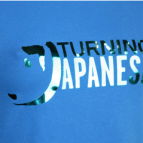Tim Iacono asks "are we Turning Japanese?" and concludes, that yes, we are,… I really think so (music below).
Turning Japanese I really think so
Courtesy of Tim Iacono at The Mess That Greenspan Made.
 As most of you probably already know, with the "effective" Fed funds rate much closer to zero percent than to the one percent prescribed by the "target" short-term rate , the Federal Reserve has already edged closer than ever before to a dreaded ZIRP (zero interest rate policy).
As most of you probably already know, with the "effective" Fed funds rate much closer to zero percent than to the one percent prescribed by the "target" short-term rate , the Federal Reserve has already edged closer than ever before to a dreaded ZIRP (zero interest rate policy).
A ZIRP really isn’t that bad, unless of course you’re a saver, in which case the disparity between "real-world" inflation and the numbers concocted by governments in their "official" version of the same will end up eating you alive over time.
For banks and hedge funds, ZIRPs are great because they’re a cheap source of funding for all kinds of wild speculative bets that are bound to inflate another asset class eventually.
As discussed in this report in The Economist, we are turning Japanese:
REMEMBER Japan’s zero interest rates? America is almost there too. Since October 29th, the target for the federal funds rate has been at 1%, but the rate at which funds actually change hands, known as the “effective rate”, has averaged around 0.25% (see chart).
The Federal Reserve does not always hit its target on the nose but the size of the gap is extraordinary. If it persists, any decision to lower the target further would be meaningless since it would not affect the rate banks actually pay.
Normally, the Fed keeps the funds rate on target by draining from or adding to the reserves that the banks hold with it. But the Fed has extended huge loans to banks and others to loosen up the credit markets, creating more reserves than it can drain. So to keep the fed funds rate up, it has, since November 6th, been paying interest on excess reserves at the full target rate of 1%.
Even so, the effective rate remains stubbornly low. One explanation is that the quasi-governmental home-loan banks and mortgage agencies have been lending to banks at rock-bottom rates. Another is that there are so few transactions that the effective rate has become an imprecise gauge.
The irony is that, were the gap to disappear, there would be a de facto tightening of monetary policy. On the other hand, if the effective rate remains near zero, the Fed will have to turn to more unconventional means of stimulating growth. Michael Feroli of JPMorgan Chase proposes outright purchases of mortgage-backed securities—another faint echo of Japan.
Well, not to worry.
Those "unconventional" means of stimulation are right around the corner.
They’ve got a whole playbook full of them that they never got to try out. They were developed about five years ago, just before a resurgent housing market rescued a floundering economy from a deflationary abyss and then went on to become an even bigger asset bubble than the one it supplanted.
With no new asset bubble waiting in the wings at the moment, it looks like the playbook will be used this time around.
ooo
Tim’s cartoon of the week:

Also, borrowed from Tim’s site, originating with Tom Tolles at the Washington Post:
Thanks Tim!




